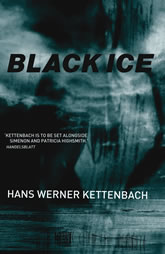Thomas Edsall’s
Building Red America is a frustrating book. Edsall’s topic is how the New Right has achieved power, and possibly permanent power, by permanently transforming, in a revolutionary way, American society at all levels. In his general thesis, Edsall is certainly correct (even if his thesis is not precisely new or groundbreaking or deep). For this, Edsall should probably be praised.
What is frustrating about Edsall’s book, however, is much more interesting than his correct overarching thesis.
Building Red America is a book about Right politics in America that does not even mention the word capitalism. As frustrating as a book about Left politics that failed to discuss capitalism would be, a book about Right politics in America without capitalism is simply incoherent and eventually trivial. The frustrating fact is that Edsall is very close to understanding a great deal, but seemingly intentionally verves off into shallowness.
The heart of the discussion over how the New Right attained such power lies in the following conundrum: the middle class and upper working class in America (outside of the South), like most middle classes in the vast majority of liberal capitalist democracies, had accepted moderate Manchester liberalism for most of American history (think the liberal Republicans who dominated the politics of many states outside the South for roughly 100 years after the Civil War). Accepted it, that is, until the late Sixties and early Seventies, when the white middle classes moved almost universally to a quite extremist version of Manchester liberalism coupled with nihilist and radical versions of fundamentalist Christianity.
This has been the primary puzzle of intellectuals and political pundits for the past thirty and more years, of course. In some sense, it’s simply a version of the 100 years old Marxian false consciousness of the proletariat thesis updated for the current American scene. The Marxian false consciousness thesis, however, describes a continuum – the working class has never opposed capitalism as much as Marxists do. This has been a constant throughout the Industrial and post-Industrial eras. What is inexplicable in the American scene is a recent move from a very long-held moderate Manchester liberalism to a very extremist version of the same (and, of course, newly combined with the above mentioned fundamentalism).
One fundamental fault of Edsall is beginning his book by discussing “politics at the top” – i.e. current politics as it looks primarily from elite circles in Washington, DC. This is not a repetition of the too-common criticism of elitism. Rather, my criticism is of the value of Edsall’s particular elitism to understanding this phenomenon. The power of the New Right is not primarily explicable by the New Right’s machinations in the 1990s and 2000s. Those machinations were only made possible by the near-universal popularity of the New Right’s politics on a grassroots level starting in the late 1960s, thirty years before the New Right began it’s latest stage of concretizing its power under the second Bush administration.
Edsall analyzes the effects before analyzing the causes (if he can be said to analyze the causes at all). The primary puzzle is how the middle class in America became radicalized, not how that radicalization was later transformed into political power. It’s comparatively easy to gain political power if a lot of people are already willing (even eager) to vote you into office.
Edsall’s background as a journalist makes him ill-prepared to perform this analysis. Journalists primarily understand politics at the overt political level – reporting on elections, government ministries, policy plans, parliamentary developments and so on. Strangely, this type of journalism is actually most useful in an aristocratic, pre-Enlightenment states. In aristocracies or monarchies, who is King, who are the King’s ministers, who the heads of the leading aristocratic families are is actually of the highest importance.
This is not true of liberal capitalist democracies, which shift conflict from the political realm to sublimate that conflict primarily within the economic realm (and sometimes in the religious realm). The political, economic and religious are all one thing in the pre-Enlightenment state: the polis in Greek philosophy. But the Enlightenment state separates these things into separate realms, even though that separation has always been largely illusory.
Thus, the identity of government ministers or overt policy plans or the composition of the legislature within liberal capitalist democracies is paradoxically not of very great political importance. Most of the primary political decisions have already been made by Enlightenment ideology long ago: the social contract state from Hobbes and Locke, capitalism from Locke and Smith, private life by Rousseau’s romantic family and so on. Pre-Enlightenment (which also means pre-ideological) states had more politics on an overt level because many more decisions (political, economic, religious, private and public) were overt political decisions.
So, Edsall’s focus on the elite end of democratic politics in Washington is not very helpful in answering our puzzle.





